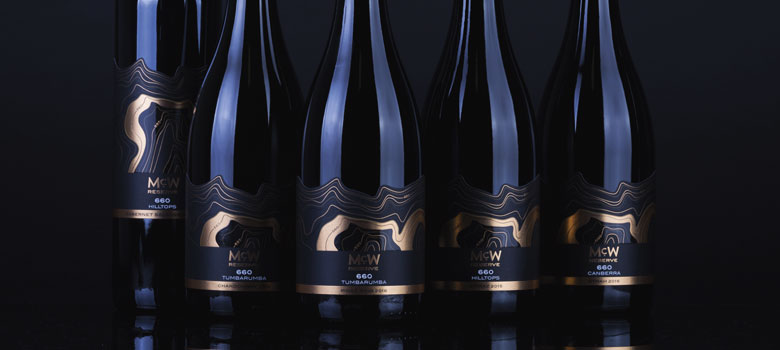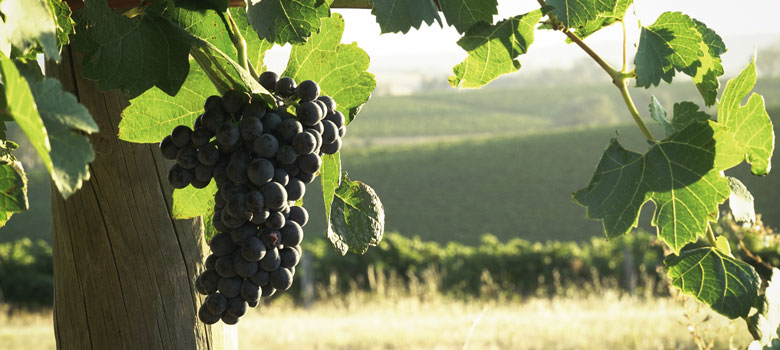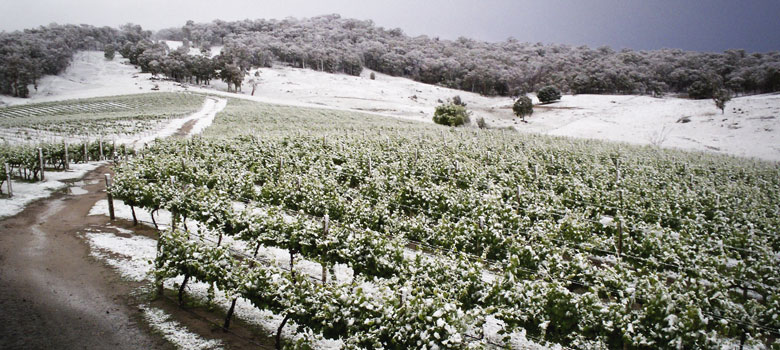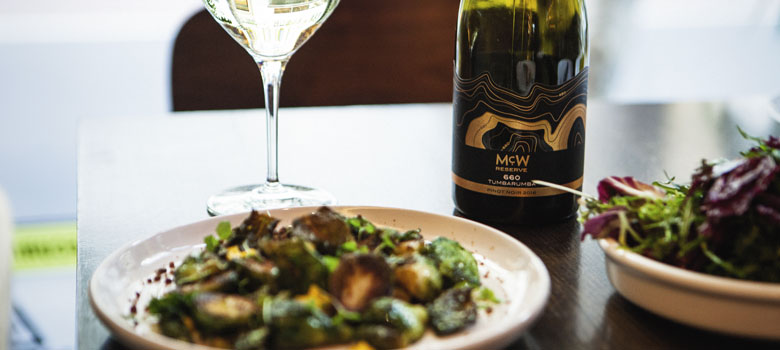
Wine
How McWilliam’s Made Cool Regions Hot
Like all trends, what’s hot in wine is always changing. In fact, what’s hot right now is actually very cool.
Since table wine took off in Australia in the 1960s, the range of wine styles we have to choose from has become incredibly diverse.
But it hasn’t always been this way. Australia was once famous for ‘sunshine in a bottle’ wines and it took winemakers with a fresh vision and incredible foresight to change the viticultural landscape.
Leading the pack with their innovative spirit, McWilliam’s Wines were one of the first to predict new trends in wine styles and seek out the perfect regions to create them.
The quest for cool

In the late 1980s, McWilliam’s recognised that while the wines they were making from their Riverina and Hunter Valley vineyards were still incredibly popular, they saw the potential in expanding their viticultural horizons.
As Chairman of McWilliam’s Wines Group Jim Brayne explains, “We were looking for regions that delivered flavours that went really well with food, as we were seeing a move away from traditional European-style cooking towards new and exciting Asian flavours.”
This meant complementing the big, bold wines that Australia had hung its oenological hat on with a range of medium bodied styles. However, this involved taking quite a leap of faith, given, as Jim describes, “Back then there was very little talk about new flavours and people probably thought we were off with the fairies.
“But we had an absolute belief that we wanted to get to a certain flavour profile that was going to be a new part of the future identity of Australian wine.”
Jim and the team knew that the answer to creating these flavours lay in cool climate regions. However, Jim also knew that cool climate viticulture in Australia was in its infancy.
As he explains, “There was a little bit coming out of King Valley and the Alpine Valleys and some from Heathcote, but people really didn’t know where these place were. There was little regional identity attached to these flavours and the wines.”
After looking at countless sites and regions in Australia, McWilliam’s decided that by turning their pioneering approach to the little-known NSW regions of Tumbarumba and Hilltops, they could create that all-important regional identity.
It’s all about the right altitude

A main reason why McWilliam’s chose Tumbarumba and Hilltops was the altitude. Tumbarumba reaches as high as 842 metres above sea level and Hilltops around 450 metres. Both regions are also in close proximity to the snowy mountains, giving them a solid cool climate rating.
Add the altitude to the cool climate and the result is that the regions’ vineyards are exposed to concentrated sunlight with cooler air temperatures, which allows longer ripening periods. What’s more, lower temperatures at altitude create more concentrated fruit, as UV rays can penetrate the skins and pips, evenly producing softer tannins. These conditions come with challenges, however. As McWilliam’s Chief Winemaker Andrew Higgins explains, “Coaxing the fruit to ripeness can be stressful due to the longer growing season and slower rate of ripening.
But the risk can deliver high rewards, which makes the success even sweeter.”
The rewards, Andrew continues, are “White wines with a great acid line providing a beautiful structure and red wines with vibrant aromatics – pepper in Shiraz, blackcurrant and bayleaf in Cab, juicy red cherry and strawberry notes in Pinot Noir – and elegant, finely framed palates.”
Jim adds, “We wanted to offer wines that are ripe, but without the alcohol, ready to drink without too much age, and Hilltops and Tumbarumba gave us that.”
Having taken that leap of faith, McWilliam’s knew that Australian drinkers might take a little while to take up the trend, but they were buoyed by some early feedback.
As Jim recalls, “Wine scribes liked the wine and wrote positively about them, we started winning awards and that
helped, too.”
A new range of cool wines

Fast forward to more recent years and thanks to the foresight of wineries like McWilliam’s, cool climate styles have become hugely popular among Australian wine lovers.
To celebrate that fact and to keep building on the regional identity of Tumbarumba and Hilltops, McWilliam’s released two ranges that showcase these special sites.
The McW 660 Reserve and McW 480 ranges feature a beautiful line-up of wines that are crafted from vines grown at an average of 660 metres and 480 metres above sea level.
The 660 Reserve range features Shiraz and Cabernet Sauvignon from Hilltops, with the Gold medal-winning 2017 Shiraz presenting floral hints and a rich mid-palate moving to a long, fine finish that ensures graceful, balanced ageing. The 2016 Cabernet has also won Gold with its full-bodied, classic structure, silky cassis and dark chocolate fruit finishing with fine grained varietal tannins.
There’s also a McW 660 Reserve Pinot Noir from Tumbarumba, which typifies cool climate reds with its light to medium weight. It’s also full of sappy red cherry fruits, earthy spices and complex mushroom notes leading to a long, velvety finish. Tumbarumba quality continues to shine in the McW 660 Reserve Chardonnay, a Gold medal-winner with a rich texture balanced by flinty acidity.
Finally, there’s the McW 660 Reserve Syrah from Canberra, also boasting Gold with its silky medium-bodied palate displaying floral red fruits with spicy oak and long, gentle tannins.
In the 480 range, the Tumbarumba Sauvignon Blanc is cool climate epitomised with its lively acidity and fruit sweetness coupled with a delicate mineral finish.
Another white delight, the McW 480 Tumbarumba Pinot Grigio is aromatic, crisp and long with lingering spiciness and a refreshing finish.
Rounding out the 480 trio is a Hilltops Shiraz, a Gold medal-winner with medium-bodied cool climate spice.
Deliciously diverse

These wines are an embodiment of the continual innovation from McWilliam’s and, as Jim highlights, “These new wines are beautiful, and we hope that people try the range and appreciate the balance and elegance and really great depth and length without the weight.
“They are really designed to complement food and it’s our aim that people explore different and diverse food matchings.”
The potential for exploration with these wines is so huge because while they pair beautifully with traditional food partners, they also match with some unlikely choices.
Take the McW 660 Reserve Shiraz, for instance. Like examples from warmer regions, it can be paired with big, rich meaty dishes, but thanks to the cool climate harmony between the acidity and tannins, it can also be matched with dishes featuring lighter, spicier flavours, including Asian favourites with a bit of heat.
Tradition also says we should enjoy red wines served at room temperature, but cool climate reds turn that rule around. A chilled glass of the McW 660 Reserve Pinot Noir is sublime with salmon, but it’s also amazing with freshly shucked oysters.
When it comes to cool climate whites, the vibrancy and subtlety lends them to a range of food matches. A Chardonnay like the McW 660 Reserve can certainly be paired with the variety’s time-honoured matches of roasted poultry or creamy pasta, but it has the versatility to also complement delicate seafood.
The McW 660 Reserve and 480 ranges are testament to McWilliam’s commitment to creating wines with exceptional regional identity. In planting and establishing their cool climate vineyards, McWilliam’s made a massive commitment, rolling the dice for the long term and proving once again their position as great innovators of the Australian wine industry.